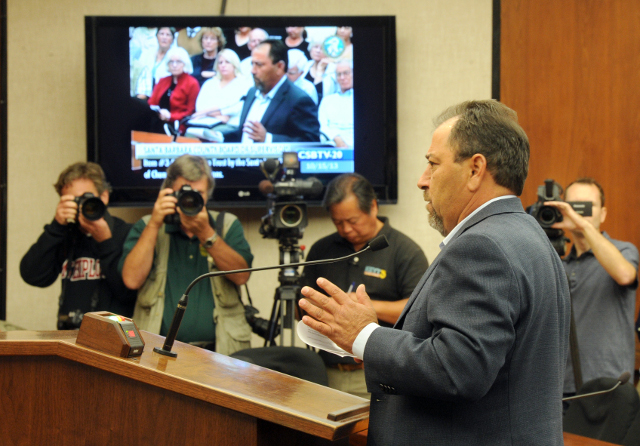County Officially Opposes Chumash’s Camp 4 Dreams
Supervisors Send Letter to Feds in Strident Opposition to Annexation of 1,400 Acres

The message couldn’t have been any clearer: “There are so many serious issues here,” said Doreen Farr, the county supervisor in charge of the Santa Ynez Valley, where the Chumash tribe is trying to annex the 1,400 acres known as Camp 4 into their reservation. “The desires of 143 members of the Chumash Tribe, no matter how well intentioned for the future of their tribe, should not and cannot outweigh the very real needs of county government and 420,000 other county residents it serves.”
In echoing the sentiments of more than two dozen public speakers, numerous environmental groups, and countless other community members who have showed up to jam-packed meetings in recent years, Farr and three of the other supervisors voted to send an official letter to the federal Bureau of Indian Affairs expressing their strident opposition to the tribe’s dream of taking complete control of the land, which would take the property off of the county’s tax rolls and, more worrisome to most, allow development to proceed without adhering to the county’s strict planning rules.
As explained in detail during Tuesday’s hearing, the annexation would likely lead to a diverse array of impacts on everything from aesthetics, traffic, and public safety to a strain on water availability in the area. “The loss of local control to regulate land uses without appropriate mitigation,” said County CEO Chandra Wallar, “can congest county roadways, impact water quality and waterways, reduce water supply to adjacent properties, degrade habitat, and also degrade air quality and the environment.”
Despite these initial assessments — the county is hoping that the feds will at least require a more thorough environmental report before deciding — Supervisor Steve Lavagnino did not vote to send the letter. In the name of community accord, he said, negative, knee-jerk reactions should give way to more discussions. “I am calling for us once again to reconsider opening dialogue with the tribe to discuss ways of mitigating the impacts,” he said. Lavagnino, along with Supervisor Salud Carbajal, were the only ones to vote in favor of establishing a special government-to-government relationship with the tribe in August. Carbajal was the only supervisor to vote against sending a letter to the feds in opposition of the tribe’s recent declaration that 11,500 acres of the Santa Ynez Valley should be included as part of their Tribal Consolidation Area, or TCA.
A frightful term for many of the residents who fall under the jurisdiction, the TCA was an attempt by the Chumash to show that Camp 4 is within their historic landscape, which would presumably ease annexation. But in a surprise announcement on Tuesday, Chumash Chairman Vincent Armenta told the board Tuesday that the tribe wants to drop the TCA designation that was approved by the federal Bureau of Indian Affairs (BIA), citing concerns that the label was hurting area property values. It’s unclear if or how the effort to rescind the TCA will affect the annexation request — or if such a move is even possible — but county staff said it would investigate the matter further and proceed as if the TCA is still in place. Staff said it couldn’t consult with the BIA directly because of the government shutdown.
Nevertheless, Armenta promised, “The tribe is going to continue its quest to bring the 1,400 acres into trust. We’re going to do it both through the administrative process, which I’m sure will be appealed, and we’ll continue to pursue it through the legislative process, where I am sure we will prevail.” On the other side of the aisle, the public speakers continued banging their drums loudly. “I think as a point of planning, and a point of fairness, we should be unanimously opposed to this application,” said former county supervisor Brooks Firestone.
“The federal laws under which this fee-to-trust application are going forward date back to the 1930s,” said Santa Barbara City Councilmember Dale Francisco, who spoke as a private citizen and explained the laws were originally created to help impoverished Plains Indian tribes who had lost their reservation land through land sales. “This is obviously not the situation in the Santa Ynez Valley,” he said. “What we’re faced with is a very wealthy and powerful development corporation. We would allow no other similar developer the kinds of liberties the Chumash are demanding.”
Camp 4 was purchased by the Santa Ynez Band of Chumash Indians from the late-actor-turned-vintner Fess Parker’s estate for $40 million in 2010, and earlier this year, the tribe began the process to annex the land into its existing reservation via the BIA fee-to-trust process. The tribe — whose members historically lived in relative poverty until opening the Chumash Casino Resort in 2004 — has repeatedly said it intends to build 143 homes on Camp 4, not another resort or casino. The BIA produced an environmental report on that annexation, available at ChumashEA.com, and is accepting comments on the proposal until November 7.



